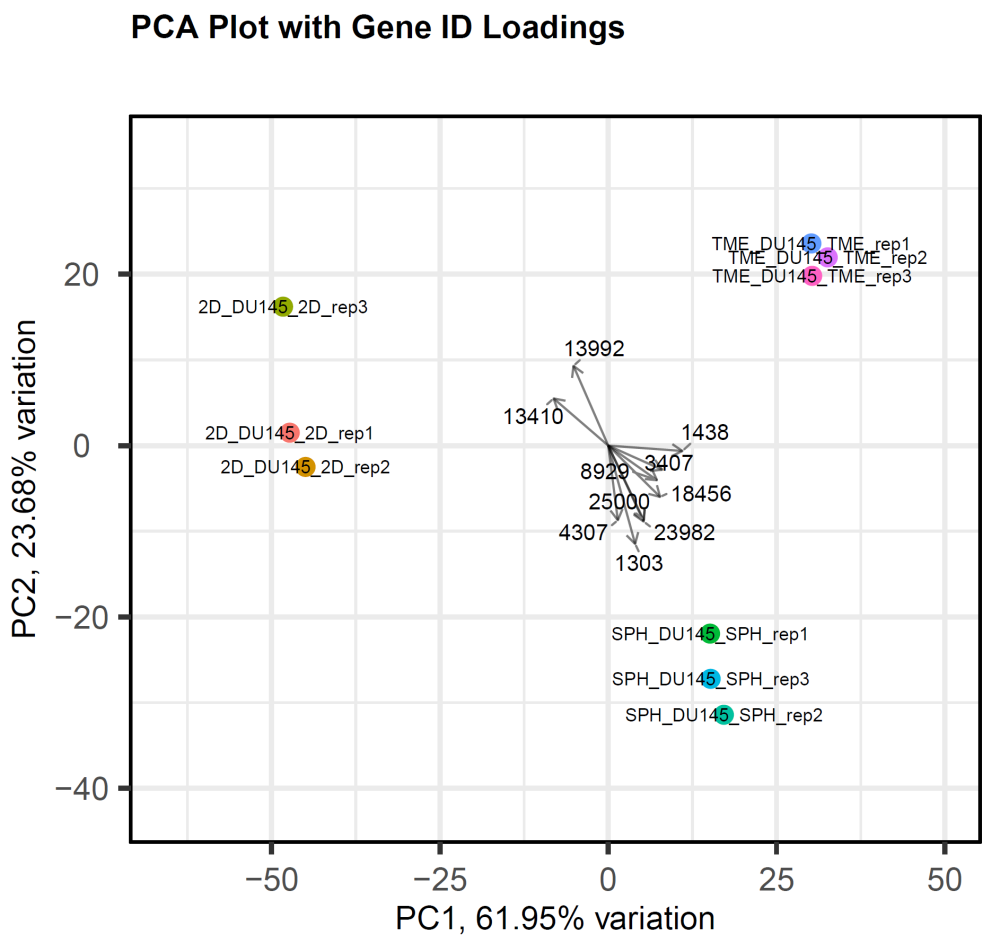If you perform an RNA-Seq assembly with replicates and specify DESeq2 as the normalization method, SeqMan NGen version 17.6 and later autogenerates editable output files for volcano and principal component analysis (PCA) plots for genes and isoforms.
- A volcano plot is used to identify events that differ significantly between two groups of subjects. The x-axis of this type of plot is the fold change (log~2) and the y-axis is the -log~10 p-value. Genes with decreased expression appear as points on the left of zero on the x-axis, while those with increased expression appear on the right. Points further from zero indicate more change than those closer to zero. The most significant data points appear at the top of the plot.
- PCA plot shows the correlations between each of the principal components and the original variables. The plot is used to elucidate which variables (“loadings”) affect the principal components, and in which direction. To learn more, see PCAtools: everything Principal Component Analysis.
File locations and formats:
The files are located in two subfolders of the SeqMan NGen output subfolder called Bioconductor-output. The folders are named results-gene and results-isoform, and each contains a number of .csv and .pdf files as shown in the example below:

- The .csv files can be opened using a spreadsheet application such as Microsoft Excel or Google Sheets.
- The .pdf files contain vector graphics and can be edited by opening them in Adobe Acrobat and clicking Edit a PDF in the left margin. Text labels may overlap at first, and you will likely need to move them or shorten their names to correct this issue. Note that the .pdf files can also be opened as static images in applications such as Microsoft Word or PowerPoint.
File formats and uses:
The files in the Bioconductor-output folder are automatically prepared during the RNA-Seq assembly by a Bioconductor pipeline that works together with SeqMan NGen. They may include:
- MA plots
- Dispersion estimate plots
- Plots comparing individual samples to a control
- Plots calculated using different normalization methods (rlog vs. VST)
- Plots that have been “shrunk” (i.e. had the y-axis shortened) to improve visualization and data interpretation
To learn more about the file types and what they are used for, see Analyzing RNA-seq data with DESeq2.
The following example image shows a PCA plot generated using data output from a SeqMan NGen RNA-Seq assembly. The experimental data consisted of three replicates each for three time-based samples from the prostate cancer data set DU145. The plot demonstrates that the replicates are very tightly correlated and that there is a good separation between the different time points.

Need more help with this?
Contact DNASTAR


